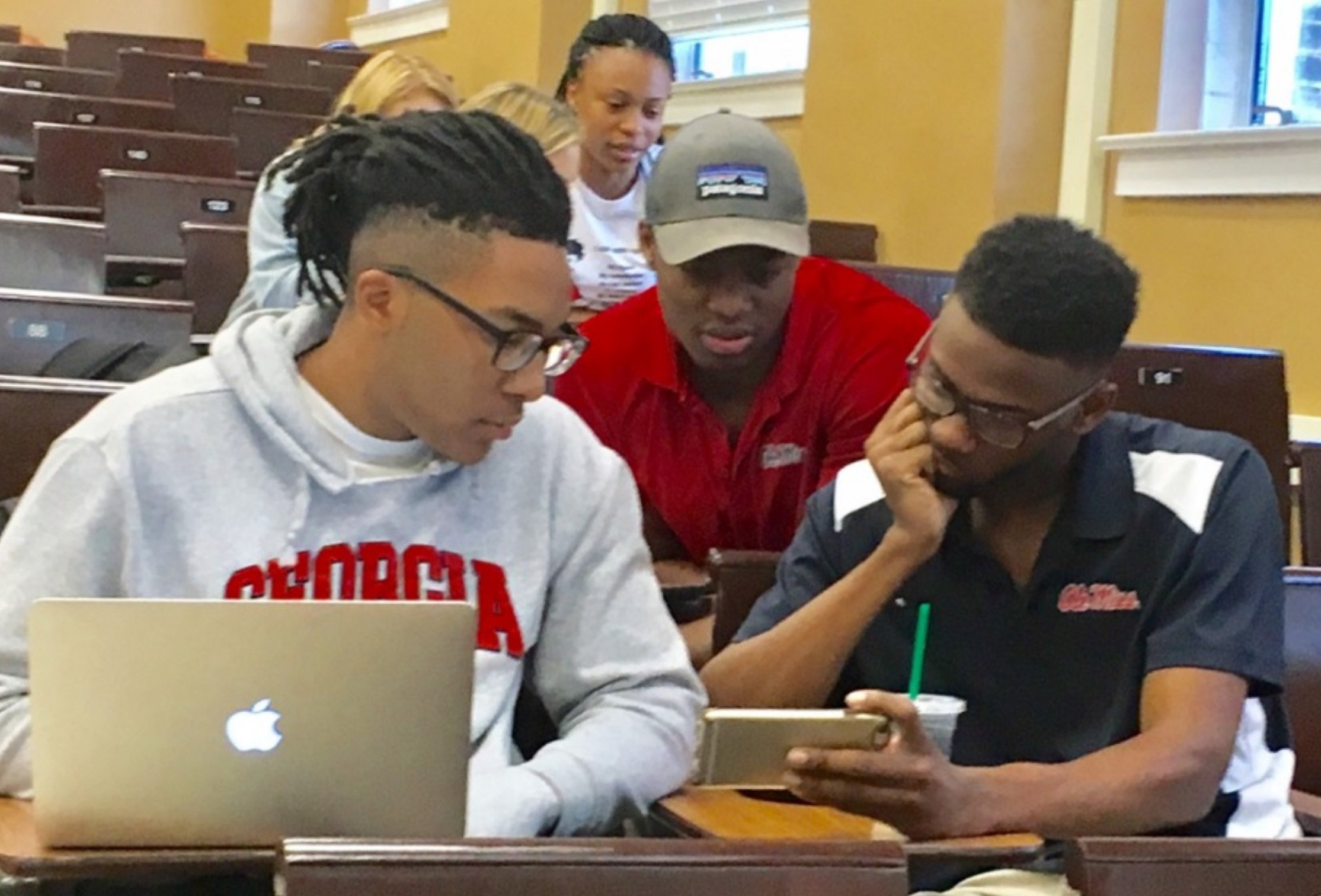 You could say that Patti O’ Sullivan was a victim of her success. Her first-year discussion course in Pharmacy Ethics at Ole Miss had grown to the point where she needed to add sections, and then to the point where discussions were unmanageable. She couldn’t subdivide the sections any more due to lack of teaching space and student schedule issues—the program her course is part of follows a cohort format, and students must all advance through the curriculum together. So she fell back on lecturing.
You could say that Patti O’ Sullivan was a victim of her success. Her first-year discussion course in Pharmacy Ethics at Ole Miss had grown to the point where she needed to add sections, and then to the point where discussions were unmanageable. She couldn’t subdivide the sections any more due to lack of teaching space and student schedule issues—the program her course is part of follows a cohort format, and students must all advance through the curriculum together. So she fell back on lecturing.
Inevitably, the lecture format led to low engagement from students. Reading their end of semester evaluations, Patti could see that while they weren’t bored with her class, they increasingly viewed it as a “typical” college course, or a hoop they had to jump through to meet their requirements. She didn’t become an instructor to teach a typical college course.
Testing the Digital Waters
Patti couldn’t do anything about high enrollment, but she knew she had to find a way to increase engagement. She added a few online modules to her course using another platform. She quickly found herself frustrated with the result.
“I couldn’t track whether students were actually watching the videos or doing the readings online,” she said. “I could tell they weren’t, because they were coming to class unprepared.”
In 2015, she was asked to take over as the manager of the Personalized Learning and Adaptive Teaching Opportunities Program (PLATO) from her colleague. Patti attended a conference where several personalized and adaptive learning companies gave presentations—including Realizeit.
“Of all the people who spoke, Manoj [Kulkarni, Realizeit’s CEO] was the only one who took a pedagogical approach,” said Patti. “Everyone else was giving a sales pitch. I was impressed.” She was attracted to Realizeit in part because it offered her the capability to track what students completed and monitor their progress in real time. She scheduled a demo and signed on.
Transforming the Classroom
Working with Realizeit’s team, Patti began to design her adaptive course. She launched her Realizeit-powered class in the fall 2016 semester, putting content modules online and re-structuring class meetings into discussion groups of three to five students. Students would complete work online and then come to class to participate in activities.
Patti soon noticed a difference in her students’ behavior. “Students see the class differently – they’re much more engaged. They actually talk to each other, and I know they’re doing the work.” In addition, Realizeit’s data-gathering and transparency encourages students to stay accountable - in survey, Patti’s students revealed that they were more likely to complete online assignments when they knew she could check up on them.
“Before, my class was content-based. Now, it’s concept-based. We can do active learning around exploring concepts.” With Realizeit, Patti has been able to shift her students from passive consumers of lectures to active participants in their education.

Transforming Relationships
In addition to improving engagement with the content and concepts presented in the course, the Realizeit implementation has changed how she relates to her students in class and during office hours.
“During group discussions, my T.A. and I can bond with students, just ask them how their day’s going, in a way we couldn’t before,” Patti explains. “And before Realizeit, students would usually only come to my office around exams. I’d get the type A ones before the exam to check on the study guide—asking me basically how to regurgitate the content to get the best possible grade. After the exam, you’d have students who didn’t do so well coming to see how they could improve their grade.”
Now, when students come to see her, it’s usually with questions about their learning rather than the next test. Am I going in-depth enough on this assignment? The people in my group have a disagreement; how can we resolve it? They’ve raised their level of engagement not just with the material, but with their own learning processes.
Seeing Results, Spreading the Word
In addition to anecdotal evidence, Patti has seen a change in student evaluations: student satisfaction scores for the Realizeit pilot term jumped five percentage points over the previous spring. Her department chair, who was initially skeptical, now recognizes the innovative potential of Realizeit. “He’s put me in touch with the professional program at the medical center,” she says. “He’s asked me to start working with adaptive learning on a larger scale.”
What’s next for Patti’s students? This spring, as she began her second semester with Realizeit, she made a New Year’s Resolution: she would stop lecturing. So far, she’s kept that resolution. “There are still improvements to be made,” she says, “But I’m confident now that the heavy lifting of building the course is over, and I’ll be able to edit the content easily from here on out.”
Learn More
Discover how Realizeit’s personalized learning system can help you power student success in a way that respects your content expertise and teaching style – schedule a demonstration today!
